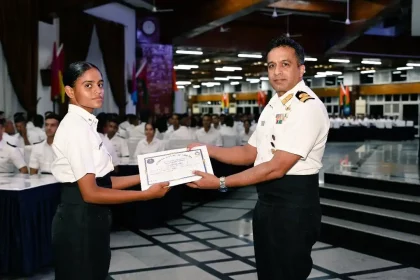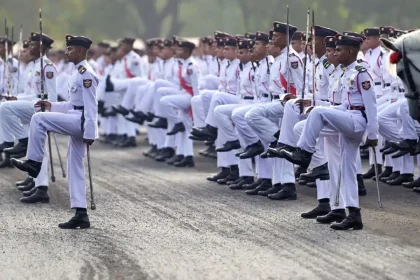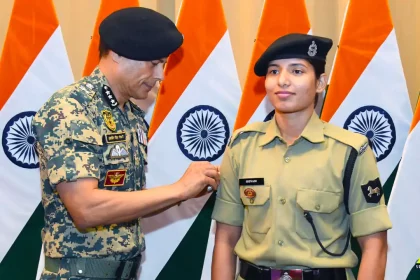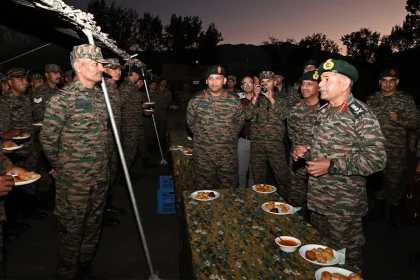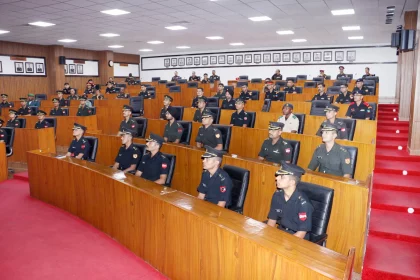Indian Naval Academy Hosts Guest Night Celebrating Camaraderie and Naval Traditions
As the evening concluded, the sense of unity and shared pride echoed the Academy’s motto — “Forged in Tradition, Anchored…
NDA Cadet Aditya D Yadav Dies During Swimming Practice in Academy
The next of kin and civil police have been informed, and a formal inquiry has been ordered to ascertain the…
Meet First Woman Constable in BSF to Receive Out-of-Turn Promotion
Her achievement stands as a powerful message: with dedication and determination, even the highest milestones can be reached, no matter…
Desi Dog ‘Riya’ Outshines 116 Foreign Breeds, Wins Best Tracker and Dog of the Meet Titles
BSF’s Mudhol Hound ‘Riya’ wins top honours as Best Tracker and Dog of the Meet, marking a historic moment for…
Do Indian Army, Air Force, and Navy Personnel Get a Diwali Bonus?
The Diwali bonus, officially a non-productivity-linked ad-hoc bonus, is an annual gesture from the Government of India to recognize the…
Young Officers’ Course Commences at Army Air Defence College, Gopalpur
The Young Officers’ Course at AADC Gopalpur began on 22 October 2025, training newly commissioned AAD officers and participants from…

